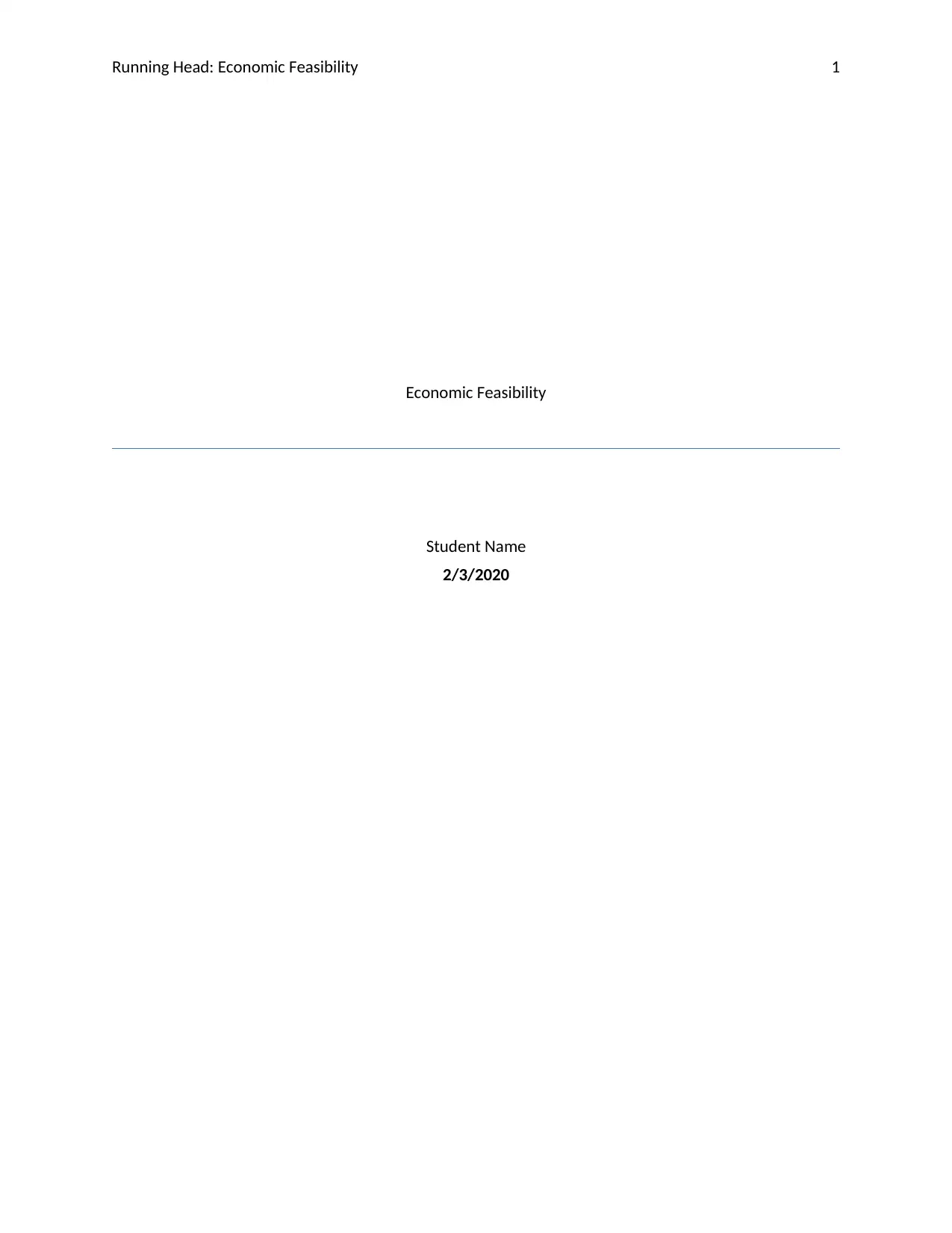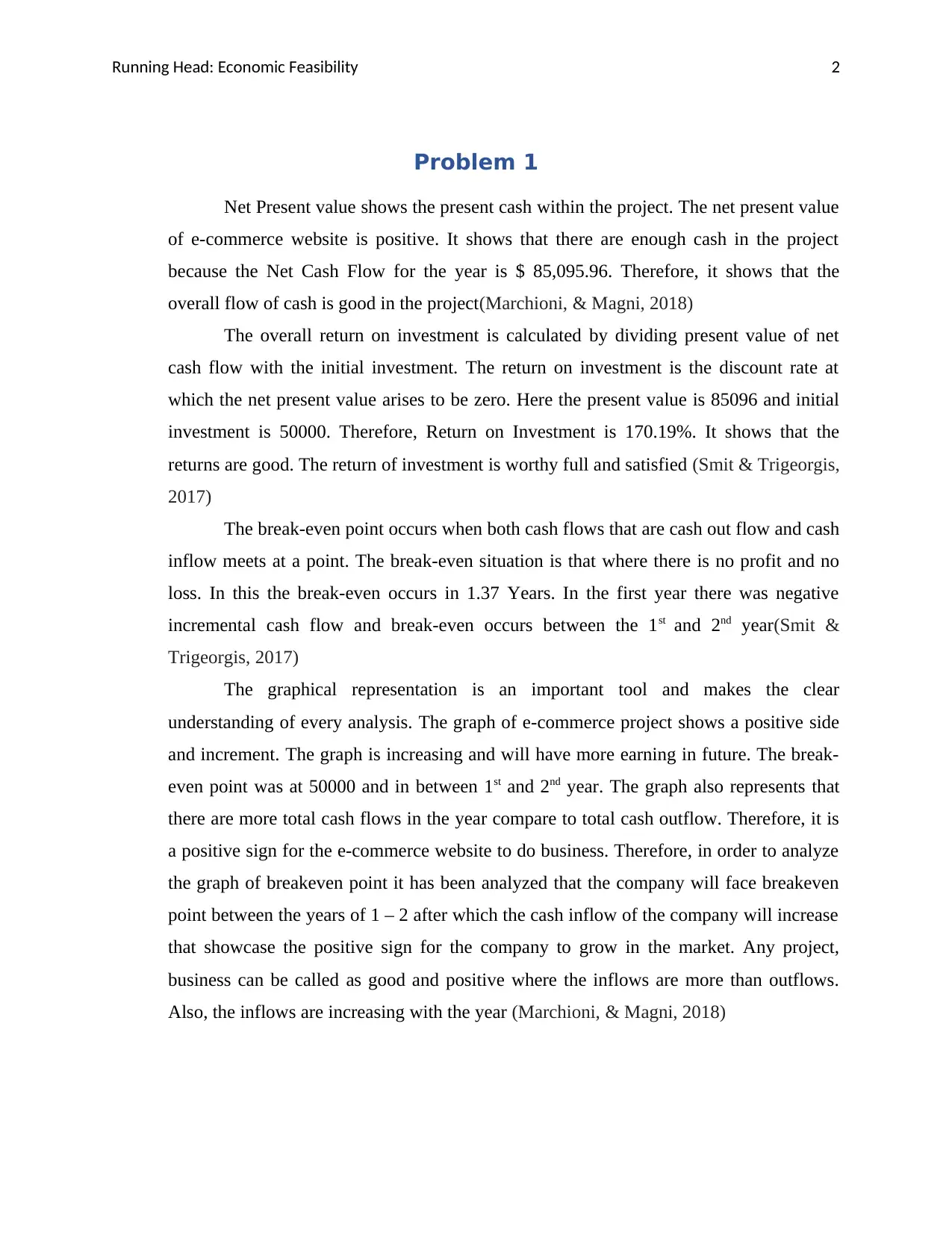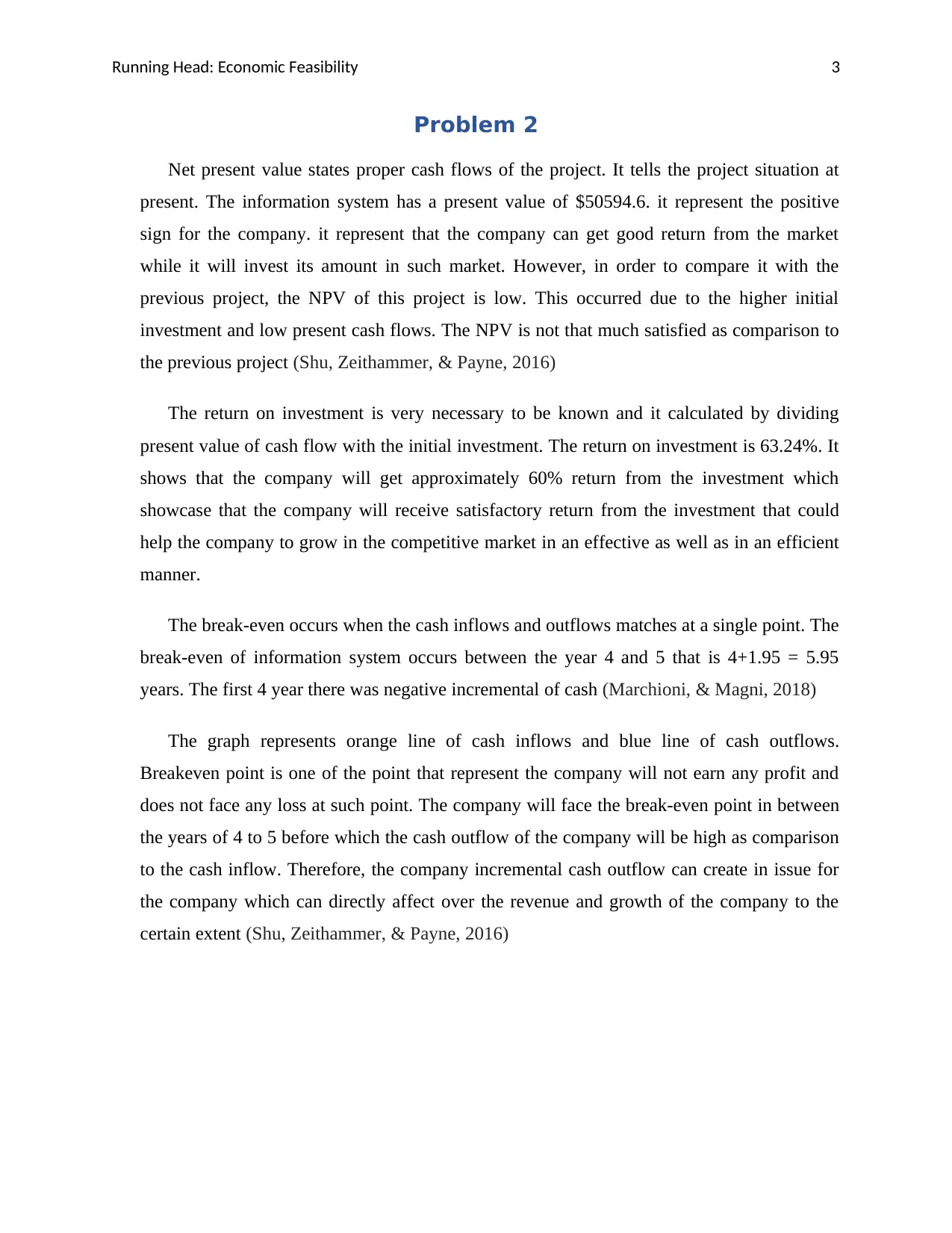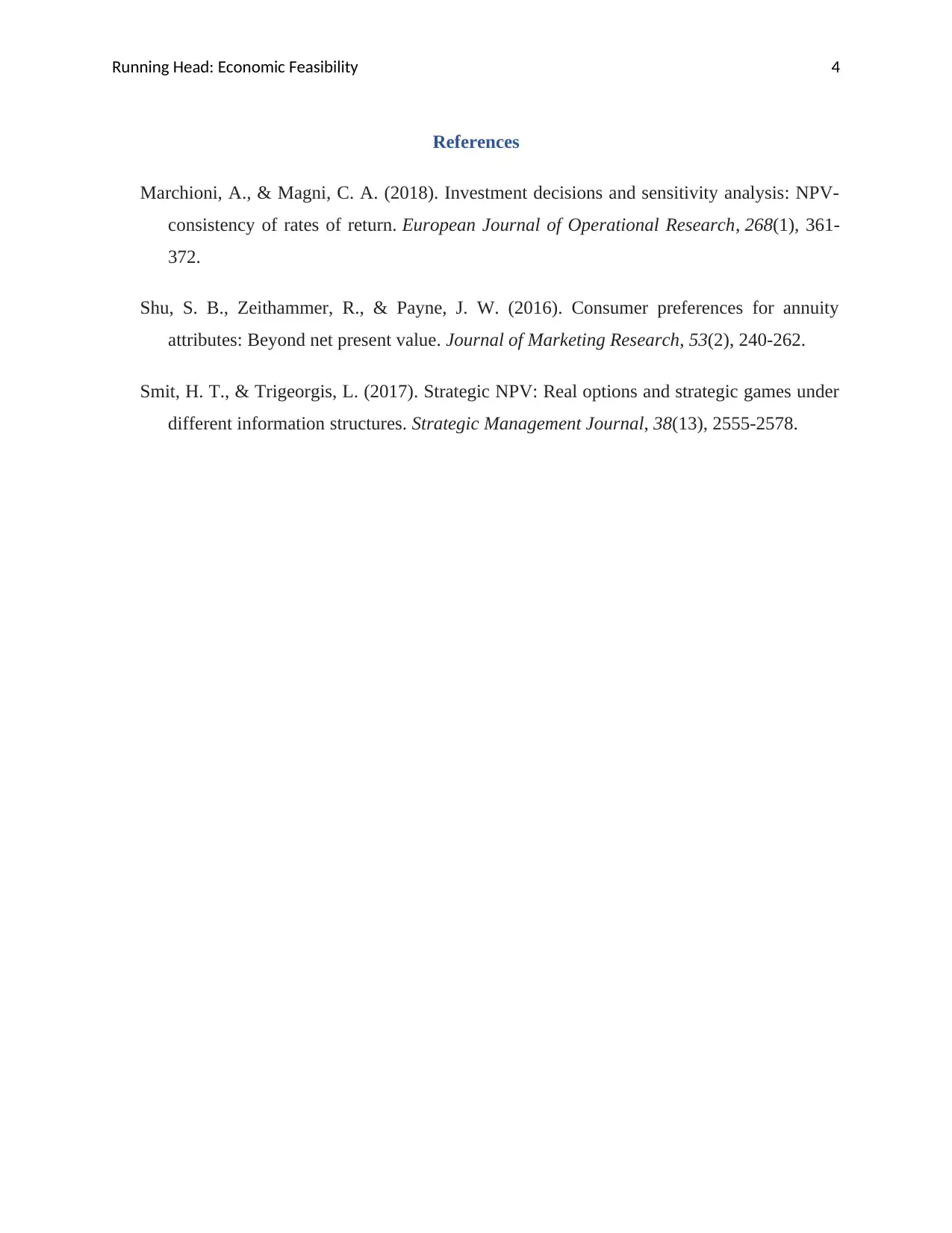BUS 300: Economic Feasibility Analysis of E-commerce and Info Systems
VerifiedAdded on 2022/08/17
|4
|902
|22
Homework Assignment
AI Summary
This assignment analyzes the economic feasibility of implementing an e-commerce website and an information system. The solution calculates the Net Present Value (NPV), Return on Investment (ROI), and break-even points for both projects. The e-commerce website shows a positive NPV and a high ROI of 170.19%, with a break-even point at 1.37 years. The information system has a lower NPV due to higher initial investment and lower present cash flows, with an ROI of 63.24% and a break-even point between the 4th and 5th year. The analysis includes graphical representations of cash flows and break-even points, demonstrating the financial viability of each project. The student uses the provided data to assess the financial health of the e-commerce website and information systems, providing insights into their potential for growth and profitability.
1 out of 4











![[object Object]](/_next/static/media/star-bottom.7253800d.svg)